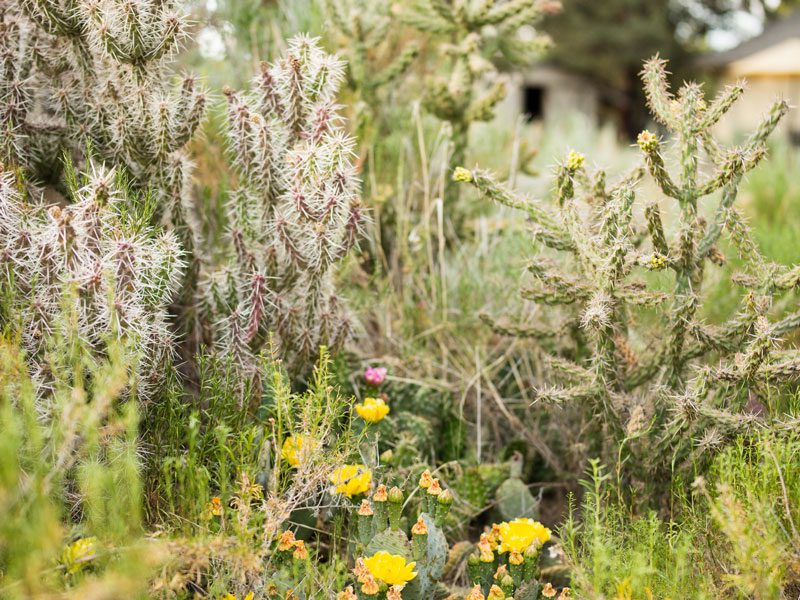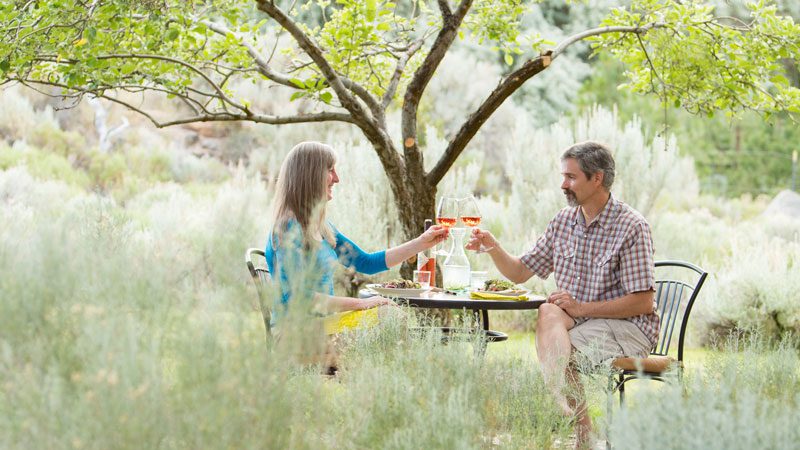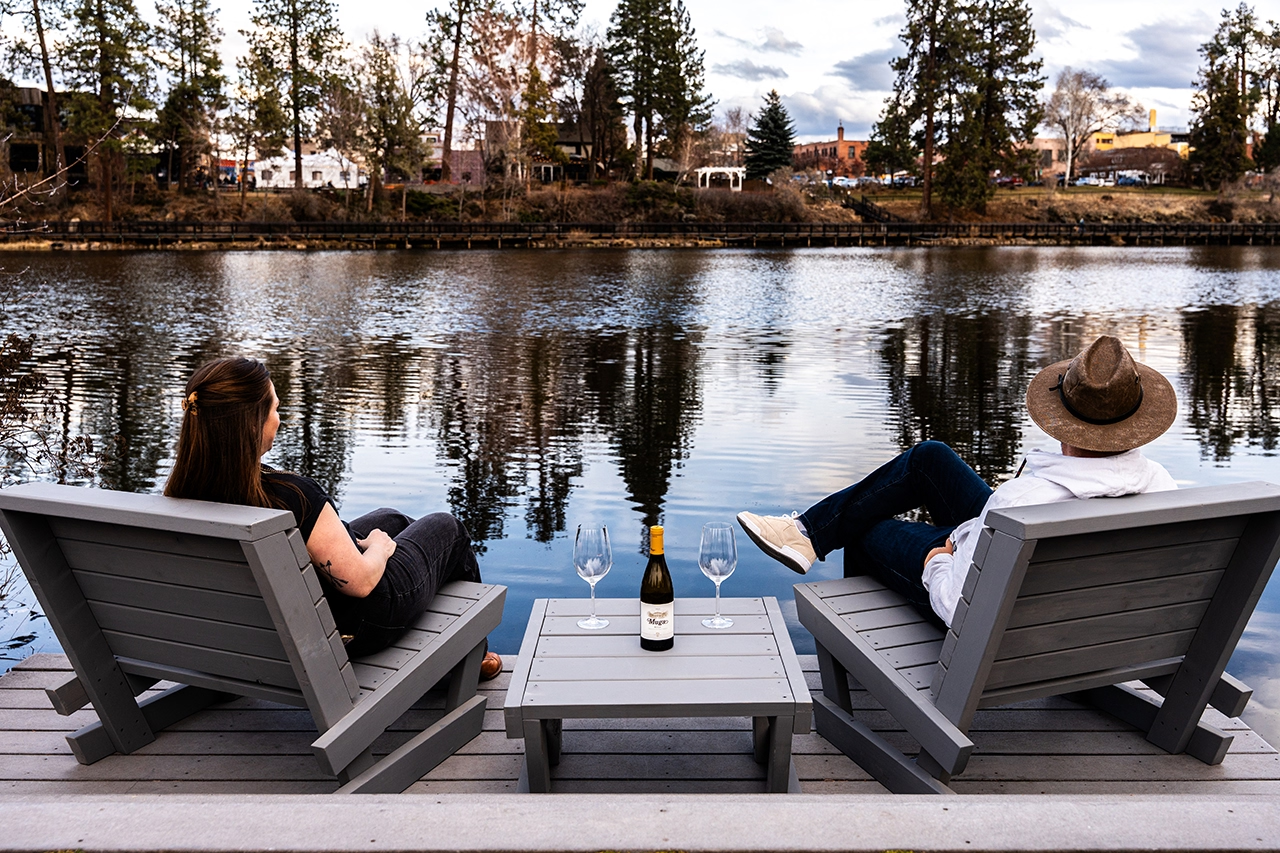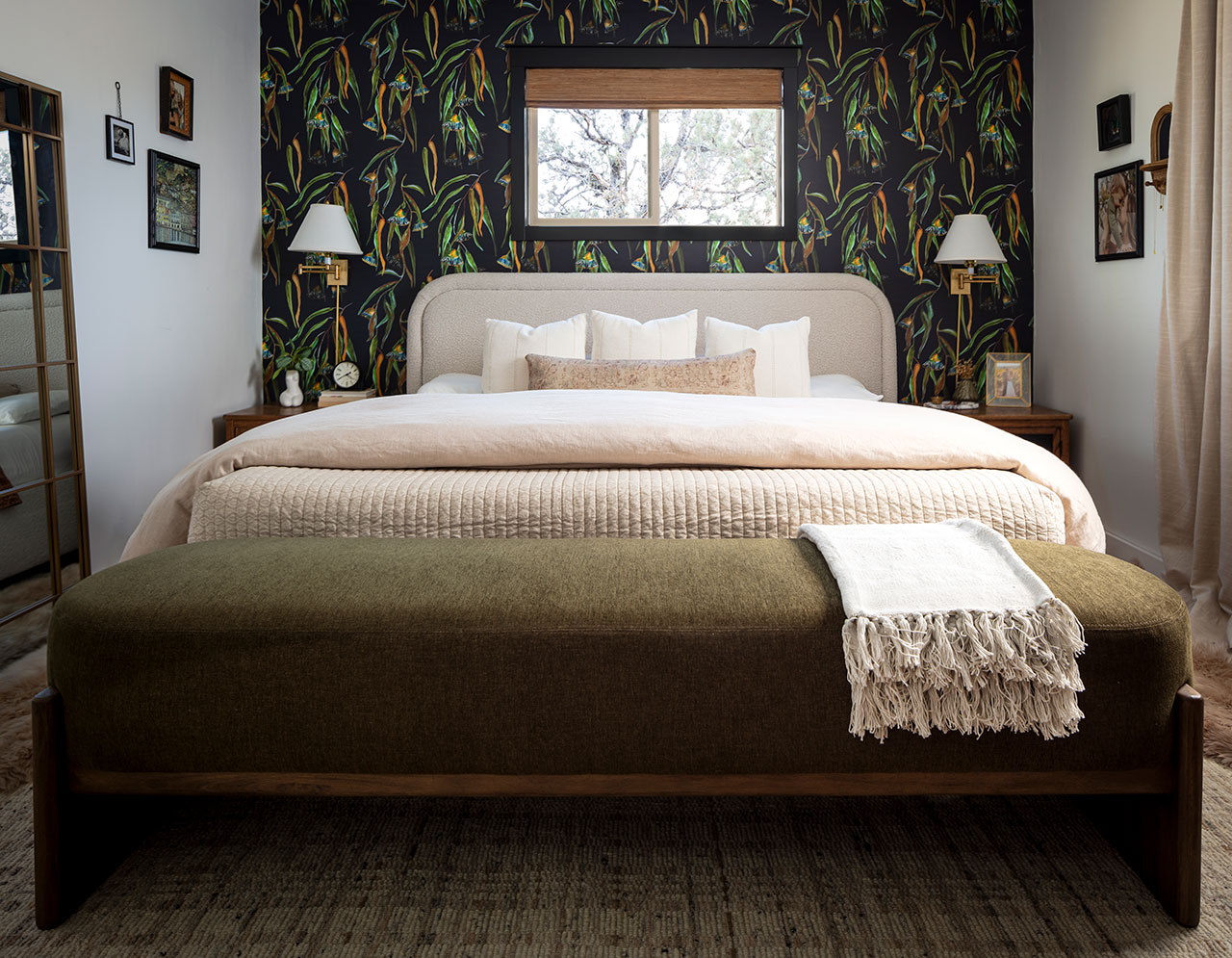Andrea and Scott Baxter in their Bend garden
Amber shafts of sunlight illuminate the tips of prairie June grass. Junco birds dangle like trapeze artists on rabbitbrush feeding on the choicest seeds. A western fence lizard soaks in the late afternoon sun on a lichen-dappled lava boulder. A family of quail tumble among the sage, avoiding the watchful eye of the resident Cooper’s hawk. It’s an enthralling performance all happening right in our backyard.
Our postage-stamp-sized wildlife habitat wasn’t always such a welcoming haven for the local animals. When we purchased our home west of Tumalo State Park in 2012, we found a neglected, dying lawn losing its battle against a tide of cheatgrass and noxious weeds.
Having been raised by ecologically-minded parents not far from ecologist Aldo Leopold’s legendary shack in rural Wisconsin, I felt an immediate call to restore this damaged plot to its native state. The hope was to create a refuge among the manicured lawns that demand such intensive human intervention to survive in this arid environment.

The challenging part was figuring out just how to do so in Central Oregon, with little understanding of what truly belonged here. Initially, we naively believed that all that was needed were the “drought tolerant” plants offered at local box stores. We quickly discovered these plants require more water than the local climate provides. With some research and lots of trial and error, we were able to turn the once desolate view out our back window into one teeming with life using the rich plant diversity of the region.
It’s possible to bring the high desert into any yard in Central Oregon, and here are a few tips learned along the way to make the process easier.
Know Your Zone
Central Oregon offers a surprising variety of small ecosystems that are both subtle and distinct, from sagey juniper forests to ponderosa stands studded with manzanita. To be successful, first determine which ecosystem your home sits in to know what plants will flourish there. Not all species thrive together, or thrive in every neighborhood, so it’s worth taking a stroll in the natural terrain in your immediate area to take note of the grasses, trees, shrubs and wildflowers that grow near each other. To identify these plants, pick up some regional guidebooks such as Sagebrush Country by Ronald J. Taylor or the delightful The Nature of Bend by LeeAnn Kriegh. As an added benefit, these books provide interesting facts about the local flora and fauna—like the hibernating habits of the Great Basin spadefoot toad that can burrow in the sand for up to two years.
Make a Plan
The best time to plant is early spring or late fall when cooler temps and moister soil can encourage plants to better establish roots. A great way to get started is to pay a visit to a nursery that specializes in native landscapes, such as WinterCreek Restoration & Nursery in Bend. Or, for the more adventurous, visit a U.S. Forest Service office to get a free permit which allows you to collect up to sixteen native plants.
Consider minimizing the size of a backyard lawn to make way for more native plants that will not only endure drought conditions but will also feed and shelter wildlife. Accent with rocks and tree snags to reduce water usage and provide extra perches for birds.

Plant Like a Pro
For a natural look, plant the way things grow in the wild. Native bunch grasses are hardy and help protect the ground near shrubs while they get established. Plant complementary species in clusters, give plants enough space to avoid crowding and plant shrubs and trees away from the house to provide defensible space against wildfire. For help, seek out a landscaping service specializing in small spaces, such as Smallscape in Bend.

Be Patient
Once planting is done, allow time for the natural landscape to come into its own. Protect young plants by giving them water until they really take root. Remove weeds to allow plants to prosper. Weeds may return for a while but notably fewer each season as the natives quickly out-compete the invasives. Before long, the new plantscape will begin to thrive, propagate and invite the local animal life to play their specialized roles in your very own desert sanctuary.
It certainly was a surprise to us how readily even the cheatgrass gave up as the local plants regained their rightful place in our little patch of the high desert. The process isn’t without effort, but the desert rewards us by showing that our care translates to a landscape that is largely self-sustaining. Gone are the pesticides, heavy watering and fertilizer. In their place is the rich scent of sage, baby quail and an assortment of animal visitors native lands attract. You can’t help but feel a deeper connection with the local flora and fauna in the place we are lucky enough to call home.





